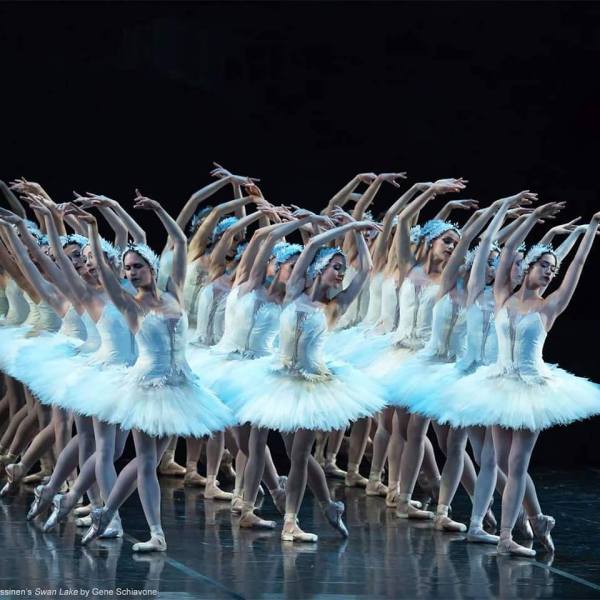Performing is one of my favorite parts of being a dancer. After all, performing is really the purpose, the point of it all (pun intended). All of those hours of training and sweating and rehearsing in the studio, while rewarding in themselves, are meant to lead to the sharing of those honed skills and artistic gifts with an audience. Ballet is indeed a performing art, and one could say that a performing art is a relationship, a relationship between the performers and the audience. Performing is simultaneously one of the most gratifying, humbling, and exalting experiences in the life of a dancer.

Moreover, during performance weeks, the regular class and rehearsal schedule is almost always different due to theater time, costumes fittings, etc. I like the change of pace. It is a welcome break from the usual expectations of the day-to-day. There is also a palpably different energy surrounding performances. Excitement and nerves are in the air.
Here where I dance, we just completed another performance. I danced as a sylph in the corps de ballet of “Chopiniana” also known as “Les Sylphides.” The ballet does not have a narrative. The only plot line consists of a poet (the only male role in the ballet) who is dreaming of and dancing with a “flock” of sylphs. The ballet was created over one hundred years ago and is of the romantic style, meaning that the tutus are long and the arms and heads are held in a particular way. It is much softer and more ethereal than other styles of ballet. I truly feel as if we are a painting come to life.
The corps de ballet is the large group of dancers that are often on stage with and behind the soloists and principals. Though the corps members are not the “main” dancers in any given ballet, one would feel their absence were they not there. A well-known example of corps de ballet work is the dance of the Waltz of the Flowers and the Snow scene in “The Nutcracker.” Those particular two pieces are extremely aerobic and physically taxing. But the true on-going challenge for the corps is pronounced right there in its name. “Corps” means “body” in French, and that it is the task of the corps dancers: to move as one living organism.
The corps work for “Chopiniana” was not as technically or physically difficult as Flowers or Snow or other corps roles, but the challenge was the meticulous care put into making sure the small details, the slow movements, the spacing, were uniform and correct. Even eye-lines and head angles were under scrutiny.
Being in the corps teaches one to be a team player and to be spatially hyper-aware. If, during a performance, the person in front accidentally goes off the intended mark, one must follow in order to keep the integrity of line.
I once saw the corps of Nutcracker described as the “unsung heroes” of the ballet because they had danced in every show. That is another challenge or benefit (depending upon one’s perspective) about dancing in the corps. Unlike principal and soloist roles, which often have multiple casts for a run of a show, the corps is usually the same for every performance. I read once that a professional dancer said she was in her best physical shape when in the corps because she was so strong from dancing in every show.
The next time you attend a ballet or watch one on video, I encourage you to be more aware of the corps de ballet. Pay attention not only to its actual dancing, but also to its smaller movements, its poses, its angles and headlines. Many hours of rehearsals and painstaking polishing of details went into that seemingly effortless final product.
Even though it may be an “unsung hero,” the corps is an integral part of a performance and without it, the beauty and richness of many classical ballets would certainly be depleted.


